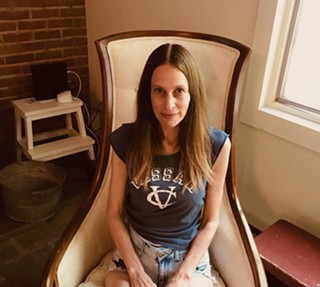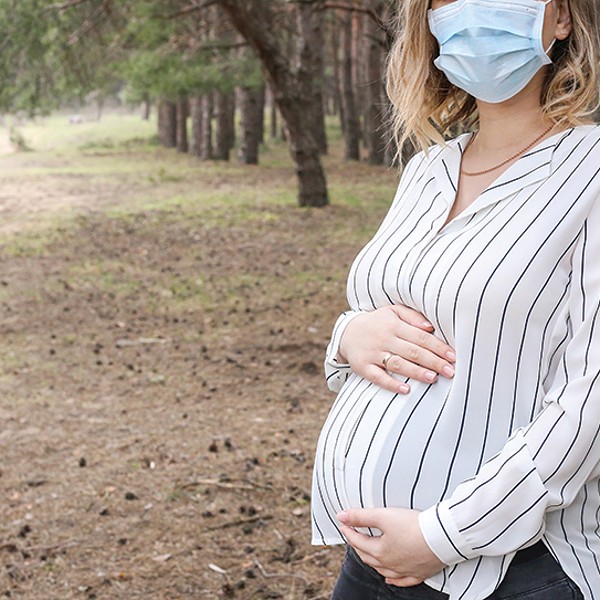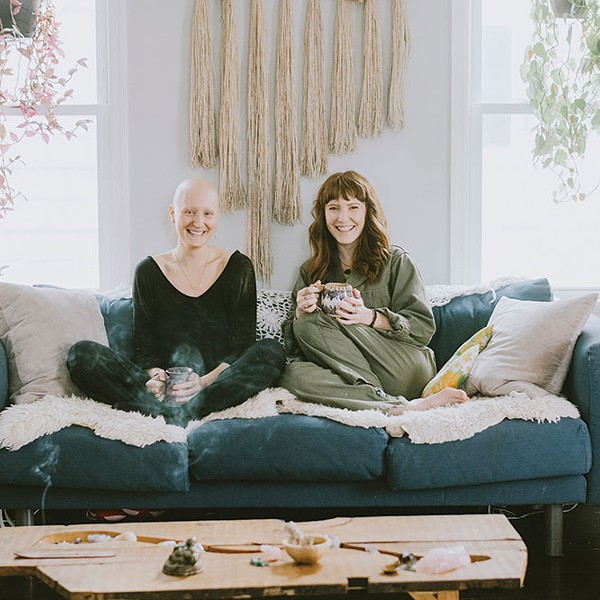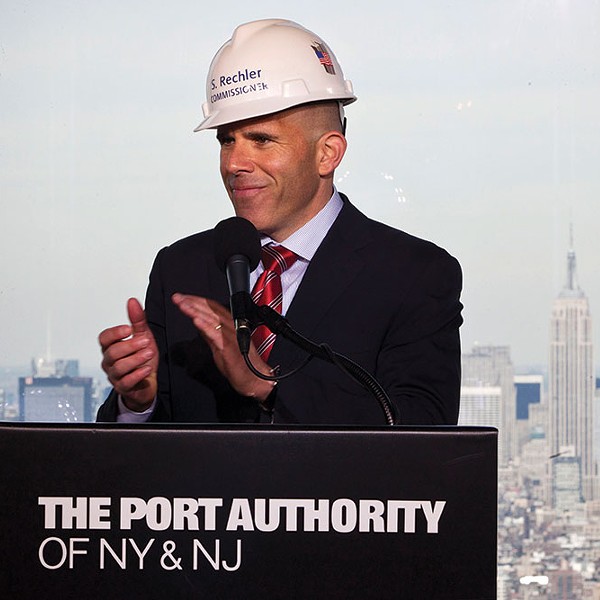Anna Martin was 37 and desperate—she wanted a second baby more than anything she'd ever wanted in her life. She knew this primal feeling well, because she'd felt it during the arduous journey toward conceiving her first child, a baby boy. Prior to his arrival, she and her husband suffered through an early miscarriage and a devastating loss at 22 weeks when their baby died in utero of a genetic defect. Then and now, the doctors used phrases that no baby-craving woman wants to hear: low egg count, poor egg quality. She tried a round of in vitro fertilization that didn't stick but took a heavy toll on her body. After working fruitlessly with three fertility specialists, and after three more natural conceptions ended in miscarriage, Martin (not her real name) flew from her home in Chicago to what she heard was the top fertility clinic in the country, the Colorado Center for Reproductive Medicine. There, she embarked on a one-day blitz of expensive testing—only to receive a damning diagnosis. Her levels of anti-Müllerian hormone (AMH), which can indicate the number of follicles inside the ovaries, was too low, and her follicle stimulating hormone (FSH) was too high. Unless she'd consider egg donation, they refused to take her as a patient. "It's easy to get caught up in the science and what the doctors say because they're so authoritative," says Martin. "But I knew I could have another baby and it would be healthy. I just knew it."
Feeling gutted, she flew home and Googled "high FSH successful pregnancy" that night. That's when she found Julia Indichova, the Woodstock-based creator of Fertile Heart Ovum Practice and author of two books, Inconceivable (1998) and The Fertile Female (2007), about birthing babies against the odds. Indichova had successfully carried her second daughter to term at 44, after doctors had given her a diagnosis of high FSH and "irreversible secondary infertility"—and she was making it her mission to help others who longed for a child. Martin read both books and dialed in to a free Fertile Heart teleconference, where Indichova advised aspiring parents to become their own fertility authority through a journey of self-discovery and an array of mind-body tools. "I thought, this seems out there for me. I'm a banker, I'm very logical-minded," says Martin. "But I'm also open-minded and I had nothing to lose." She decided to go all in, and three months later, shortly after flying out to attend Indichova's in-person workshop in Woodstock, she discovered that she was pregnant. Nine months later she gave birth to a baby boy, as perfect as her first, who felt like a second miracle.
The Blurred Line Between Birth and Business
Indichova has been working with couples on their fertility journeys for two decades (we featured her back in 2007), and she's seen many women with diagnoses as bleak as Martin's go on to have healthy babies the old-fashioned way. Yet in recent years, she's seen a shift happening in the world of baby-making, as medical intervention to help women achieve pregnancy has become increasingly more prevalent. Ever since the world marveled at the birth of the first "test-tube baby" in 1978, IVF has made dreams come true for the parents of some 8 million babies. Nowadays, couples often choose to have babies later, and many women freeze their eggs and delay parenthood as they build a career. Baby-making has become big business—revenue for fertility clinics is increasing at a rate of over four percent a year and is expected to reach $4.5 billion in the US by 2022.
Is this trend toward medicalized conception troubling? Indichova says yes, because women are turning to it earlier, often when it's not medically necessary. "What I see is that more and more women are told earlier in the process that the quickest and most effective way for them to get pregnant is IVF," she says. "In this area of healthcare, we trust machines and have learned not to trust our bodies. And because [infertility] is such an emotionally charged challenge, with so much shame connected to it, we women are so quick to see ourselves and our bodies as broken. I am absolutely in favor of testing and medical technology when it's needed. But when I see that 30 women who register for my events have had 114 failed treatments, then something about how we use medical technology needs to be questioned."
It may not help that, in 2009, the World Health Organization defined infertility as a disease. In 2017, the American Medical Association followed suit, adopting a resolution supporting this designation. By putting infertility into the disease bucket, WHO and AMA had the well-intentioned motive of giving assisted reproductive technology (ART) a billing code for health-insurance coverage, making fertility treatment more affordable to parents who cannot conceive naturally. Yet there may be an emotional cost to the designation that no insurance plan can cover. "The official definition is that if you've been trying to conceive for a year without success, you are infertile," explains Indichova. "For women over 35, you're considered infertile after just six months. Not only is this catch-all definition ridiculous, but it creates this accelerated panic—what I call the panic of the last good egg."
Indichova knows that panic, as she sees it in the faces of the women and couples who come to her workshops from around the world. The women have been given diagnoses that reduce them to a specific part or malfunction of the body—premature ovarian failure, hostile cervical mucus, poor responder. The cultural cues around them have turned their biological clock into a ticking time bomb. Indichova makes it her business to dispel the fear-inducing mindset and stress, which is anything but conception-friendly. "My take on this is the opposite," she says. "When the child is not showing up when summoned, it's not because our bodies are broken. Our bodies are protecting us, and the baby. Just because the body says 'no' doesn't mean it says 'never.' It says, 'Help me out here.' The inability to become pregnant is not a disease—it's a symptom, with a wide range of underlying causes. Some are physical, and there's a small percentage of patients who are struggling with structural challenges like blocked tubes or endometriosis. But many of them are emotional and spiritual challenges that call for a much more expansive view."
A Healing Route to Your Most Fertile Self
In the Fertile Heart method, the fertility journey is about achieving wholeness rather than breaking the body down into little parts. Indichova sees it as a particular opportunity for healing—a revelatory process that's cause for celebration rather than dread. "I use words, ideas, very specific mind-body tools," she says. "I use particular images, and I use movement because our bodies don't know how to lie." For some women, the imagery work can be very powerful and lead to breakthroughs—which is exactly what it did for Martin. Indichova had invited her to envision a group of people in her life who were supportive, and Martin imagined herself surrounded by relatives, including a grandmother who'd given birth seven times but also suffered six losses, one of them a devastating still birth. "In the visualization, my grandmother spoke to me and said, 'You don't have to have the same pain that I had, you can let that go. You don't need to match me in my number of losses,'" recalls Martin. "At that point I'd had five losses, so it was really profound. I didn't even know that was there—it was buried in my subconscious. I felt it and let it go, and it was shortly afterwards that I got pregnant."
Andrea Colman, a certified nurse midwife from Saugerties, also had a cathartic experience with Fertile Heart work. When she got married at 39, she and her husband had already been trying to get pregnant for a year and suffered three miscarriages. At the time, she was working for an OBGYN practice, and a doctor there who knew of her struggles convinced her to try Clomid, which is widely used to help stimulate ovulation. "It was awful and I hated it," she said of the drug, which caused such painful cramping that she could barely stand up. Meanwhile, she and her husband had fertility testing and everything came back normal. Colman (not her real name) was a typical case of what the medical world calls "unexplained infertility"—another problematic diagnosis that tries to create science out of the mystery of life.
Frustrated, she discovered the work of Indichova, who lived close by. It was during a "body truth" exercise at a Fertile Heart workshop that she had a breakthrough. In the exercise, women are encouraged to uncover memories that are stored in their bodies. For Colman, what came up was a traumatic and painful abortion that she'd suffered through in her late teens. "I had this experience where I relived the abortion," she says. "I was crying and it was very weird—I don't normally have experiences like that. I physically relived it, and I released it." Not long after, she discovered that she was pregnant again. Around the six-week mark, she realized that she'd always miscarried at that time, which was exactly when she'd had the abortion. This time she worked through it using specific imagery. She went on to carry the baby to term, giving birth to a healthy boy.
Empowered to Get to a Better Place
Not everyone who comes to the Fertile Heart workshops has an a-ha! moment that leads to natural conception and successful pregnancy. Every woman, every couple, has their own story, and Indichova welcomes that. "I celebrate the arrival of all babies, whether they're conceived naturally or through IVF, egg donation, adoption, or any other means," she says. "And I trust that there are many compassionate, well-meaning doctors out there who want the best for their patients. But we have to be careful, because when we pathologize this life challenge with a catch-all diagnosis, that can hurt a lot of people."
One such well-meaning provider is Courtney Stellwag, PA-C, at Hudson Valley Fertility, with offices in Fishkill and Somers. She thinks that a small-clinic setting can help strengthen the doctor-patient bond and humanize what can be a very technical experience. "You don't want your patient feeling like a number, which nowadays in healthcare, a lot of patients feel that way," she says. "This is not an easy thing they're going through, it's not a fair hand they were dealt. It's about connecting with your patient and treating them with compassion." Stellwag welcomes a new mandate in New York State, effective January 1, 2020, which requires large-group health insurance providers (for employees at companies with 100 or more full-time staff) to cover up to three IVF cycles for those who need it. "That is going to be taking a huge burden and stress off couples who are faced with having to spend tens of thousands of dollars on treatment."
During her own journey, Martin saw one friend slide into debt to afford several rounds IVF which ultimately didn't work. She and her husband are grateful to be debt-free. Even more of a gift, she was able to find freedom from the frenzy and obsessiveness that can grip so many women caught in the fertility struggle. "For years, I was in my head, so stressed out and overthinking everything," she says. "'Am I ovulating? My husband's traveling for work—I gotta go to the city he's in and make this happen.' Just craziness. [The Fertile Heart work] gets you to a better place mentally. There's a relaxation that comes over you and a surrendering to how things are going to unfold. It was so much more helpful than just getting pregnant and having a healthy baby. The whole process was really transformative."


















